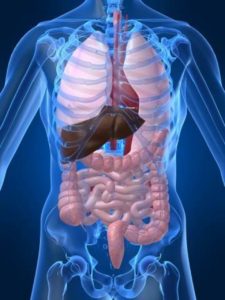Pancreatic cancer begins in the tissues of your pancreas; an organ in your abdomen that lies horizontally behind the lower part of your stomach. Your pancreas releases enzymes that aid digestion and hormones that help manage your blood sugar.
Pancreatic cancer typically spreads rapidly to nearby organs. It is seldom detected in its early stages. But for people with pancreatic cysts or a family history of pancreatic cancer, some screening steps might help detect a problem early. One sign of pancreatic cancer is diabetes, especially when it occurs with weight loss, jaundice or pain in the upper abdomen that spreads to the back.
Treatment may include surgery, chemotherapy, radiation therapy or a combination of these.
Types of pancreatic cancer
Symptoms
Risk factors
Factors that may increase your risk of pancreatic cancer include:
• Chronic inflammation of the pancreas (pancreatitis)
• Diabetes
• Family history of genetic syndromes that can increase cancer risk, including a BRCA2 gene mutation, Lynch syndrome and familial atypical mole-malignant melanoma (FAMMM) syndrome
• Family history of pancreatic cancer
• Smoking
• Obesity
• Older age, as most people are diagnosed after age 65
Cancer Prevention: Making Healthy Lifestyle Choices
Taking action to try to lower your risk for pancreatic cancer may also lower your risk for other cancers. For example, not smoking may also lower your risk for lung, esophageal, stomach, head, neck, bladder and other cancers.
Talk with your doctor or nurse about steps you can take to lower your risk for pancreatic or other cancers. Here are some actions they may suggest:
• Don’t smoke. If you do smoke, stop.
• Lower the fat in your diet.
• Eat more fruits and vegetables.
• Avoid too much weight gain and exercise regularly.
Pancreatic Cancer: Treatment Options
Depending upon the type and stage, we may treat pancreatic cancer with surgical or nonsurgical treatments. Long-term prognosis for individuals with pancreatic cancer depends on:
• The size and type of the tumor
• If it involves the lymph nodes
• The degree of metastases (spreading) at the time of diagnosis
Surgical Treatments for Pancreatic Cancer
We may recommend surgery to remove the tumor. This could be a procedure to remove a section or the entire pancreas and/or the small intestine. The type of surgery depends on the stage of the cancer, the location and size of the tumor and your health. There are several types of surgery for pancreatic cancer.
• Whipple procedure: This procedure involves removal of the head of the pancreas, part of the small intestine, the gall bladder, part of the stomach and lymph nodes near the head of the pancreas. Most pancreatic tumors occur in the head of the pancreas, so the Whipple procedure is the most commonly performed surgical procedure for pancreatic cancer.
• Distal pancreatectomy: If the tumor is located in the body and tail of the pancreas, we will remove both of these sections, along with the spleen.
• Total pancreatectomy: We remove the entire pancreas, part of the small intestine and stomach, the common bile duct, the spleen, the gallbladder and some lymph nodes. This type of operation is less common.
• Palliative surgery: For more advanced cancers, the goal of surgery may be to relieve problems such as a blocked bile duct rather than to try and cure the cancer.

